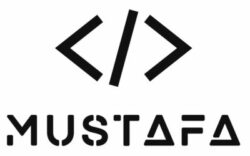Osmo Action Pro 5 Review: Is It the Best Action Camera for 2024?
If you’re on the lookout for an action camera to capture life’s most thrilling moments, DJI’s latest Osmo Action Pro 5 is a tempting option. With impressive upgrades in image quality, battery life, and smart features, this camera stands tall among competitors. But is it the best choice? In this post, we’ll break down the Osmo Action Pro 5 and compare it with two top alternatives: the Osmo Action 4 and GoPro HERO 13. Let’s see how it stacks up.
1. Design and Build Quality
Osmo Action Pro 5: DJI has continued its legacy of durable design with the Action Pro 5. Waterproof to 16 meters without additional housing, this camera is built for extreme conditions. It’s compact, sturdy, and boasts a touchscreen that makes navigating modes and settings easy, even in challenging environments.
Osmo Action 4: The Action 4 also features a rugged, waterproof build with the same IP68 rating, but it’s limited to 11 meters underwater. While it shares much of the design DNA with the Pro 5, the Pro 5’s build is slightly more refined, making it more suited to long, intensive use.
GoPro HERO 13: GoPro has always delivered on durability, and the HERO 13 is no exception. With a 10-meter waterproof capability (extendable with additional housing), it’s made to endure the same extremes, although its touchscreen can be slightly more finicky in wet conditions.
Winner: Osmo Action Pro 5 – with its 16-meter waterproof depth, it offers better underwater capability out of the box.
2. Video and Image Quality
Osmo Action Pro 5: Captures 4K at up to 120 fps and supports HDR. Thanks to a larger 1/1.7-inch sensor and f/2.8 aperture, it’s great in low-light settings. For those who love post-processing, the “D-Cinelike” profile provides a flatter color profile for more creative control.
Osmo Action 4: The Action 4 can also shoot in 4K, but only up to 60 fps, with a 1/2.3-inch sensor. While solid for most users, it struggles a bit in low-light conditions compared to the Pro 5, and the image quality isn’t quite as vibrant or detailed.
GoPro HERO 13: The HERO 13 is the powerhouse for high resolution, offering up to 5.3K at 60 fps and excellent HDR capability. Its 1/1.7-inch sensor performs almost as well as the Action Pro 5 in low light, making it an ideal choice for those who prioritize high-resolution footage.
Winner: GoPro HERO 13 – for sheer resolution, though the Osmo Action Pro 5 is close behind with its low-light advantage and cinematic profiles.
3. Stabilization
Osmo Action Pro 5: Equipped with RockSteady 4.0 stabilization and horizon leveling, it keeps footage smooth even in high-action scenarios. The horizon-lock feature is particularly useful for creating immersive, cinematic shots that look professional right out of the camera.
Osmo Action 4: While the Action 4 has a version of RockSteady, it lacks the Pro 5’s improved horizon-lock capabilities, meaning footage can look shakier in extreme conditions.
GoPro HERO 13: GoPro’s HyperSmooth 6.0 stabilization technology is industry-leading, and it offers 360-degree horizon leveling, which keeps the camera incredibly steady no matter how you move. This makes it the top choice for those who need ultimate stabilization.
Winner: GoPro HERO 13 – though Osmo Action Pro 5 is close, especially with RockSteady 4.0 for non-extreme situations.
4. Battery Life and Charging
Osmo Action Pro 5: The Action Pro 5 impresses with a 160-minute recording time at 4K. Its quick-charge feature allows for 80% charge in just 20 minutes, making it ideal for users who don’t have time to wait.
Osmo Action 4: Battery life is decent but not groundbreaking, lasting around 140 minutes at lower resolutions. It lacks the fast-charging speed of the Pro 5, making it slightly less convenient for extended shoots.
GoPro HERO 13: Battery life on the HERO 13 has been improved, but it still falls short of the Pro 5, lasting about 120 minutes in 4K mode. GoPro has improved its charging speeds, but it doesn’t reach the rapid rates of DJI’s quick-charge.
Winner: Osmo Action Pro 5 – with a longer battery life and faster charging, it’s the most reliable choice for extended shooting sessions.
5. User Experience and Smart Features
Osmo Action Pro 5: With voice control, quick-switch buttons, and live-stream capabilities, the Action Pro 5 offers a feature-rich experience. DJI Mimo app integration allows for quick edits, adding to the overall ease of use for content creators.
Osmo Action 4: Similar to the Pro 5 in many ways, the Action 4 has fewer advanced options, such as the lack of quick-switch capabilities and lower-quality live streaming, making it less versatile for creators who need fast, on-the-go functionality.
GoPro HERO 13: GoPro’s interface is intuitive and refined, with robust voice commands, GPS tagging, and live-streaming options. The Quik app integration offers powerful editing tools, although it has a subscription model.
Winner: Osmo Action Pro 5 – the quick-switch and app integration make it more adaptable and convenient overall, though the GoPro HERO 13 is close behind.
6. Pricing and Value
Osmo Action Pro 5: Priced at a premium, the Pro 5 offers excellent value for those needing advanced stabilization, battery life, and high-end video features. However, it’s more expensive than the Action 4.
Osmo Action 4: Budget-friendly, the Action 4 sacrifices a few high-end features but remains a solid choice for users who want quality without breaking the bank.
GoPro HERO 13: As one of the pricier models, the HERO 13 provides a higher resolution but may be overkill for casual users or those who don’t need 5.3K resolution.
Winner: Osmo Action 4 – for budget-conscious users, though the Osmo Action Pro 5 is the best value if you need advanced features.
